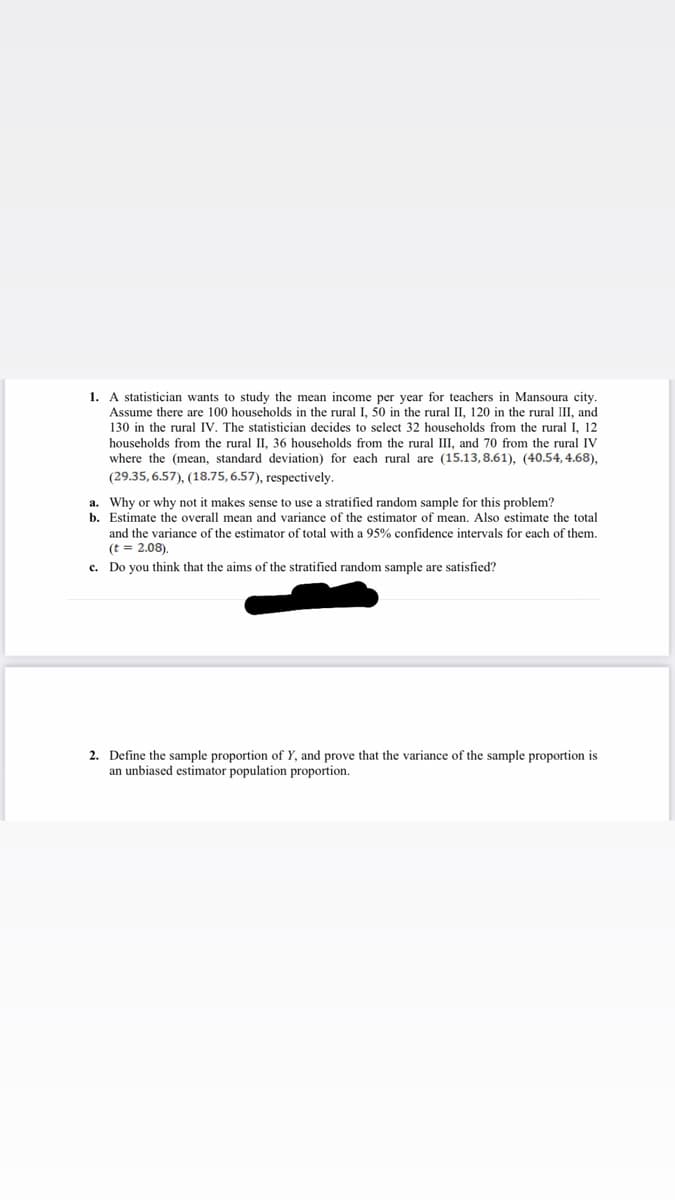1. A statistician wants to study the mean income per year for teachers in Mansoura city. Assume there are 100 households in the rural I, 50 in the rural II, 120 in the rural III, and 130 in the rural IV. The statistician decides to select 32 households from the rural I, 12 households from the rural II, 36 households from the rural II, and 70 from the rural IV where the (mean, standard deviation) for each rural are (15.13,8.61), (40.54, 4.68), (29.35, 6.57), (18.75, 6.57), respectively. a. Why or why not it makes sense to use a stratified random sample for this problem? b. Estimate the overall mean and variance of the estimator of mean. Also estimate the total and the variance of the estimator of total with a 95% confidence intervals for each of them. (t = 2.08). c. Do you think that the aims of the stratified random sample are satisfied? 2. Define the sample proportion of Y, and prove that the variance of the sample proportion is an unbiased estimator population proportion.
Continuous Probability Distributions
Probability distributions are of two types, which are continuous probability distributions and discrete probability distributions. A continuous probability distribution contains an infinite number of values. For example, if time is infinite: you could count from 0 to a trillion seconds, billion seconds, so on indefinitely. A discrete probability distribution consists of only a countable set of possible values.
Normal Distribution
Suppose we had to design a bathroom weighing scale, how would we decide what should be the range of the weighing machine? Would we take the highest recorded human weight in history and use that as the upper limit for our weighing scale? This may not be a great idea as the sensitivity of the scale would get reduced if the range is too large. At the same time, if we keep the upper limit too low, it may not be usable for a large percentage of the population!

Trending now
This is a popular solution!
Step by step
Solved in 5 steps with 5 images


